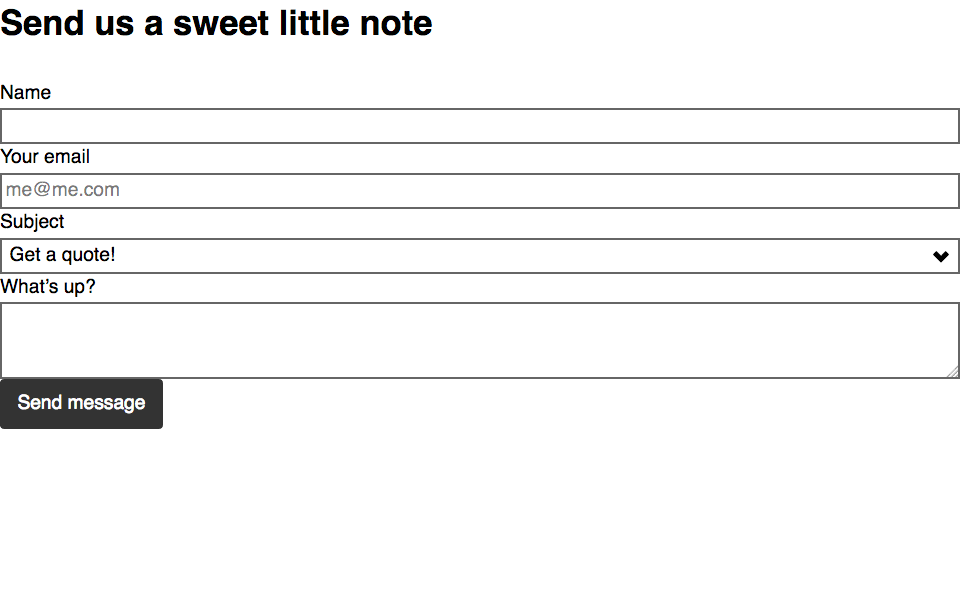We’re going to look at how to make a functional contact form. With only HTML, and no backend server, it would be impossible to actually send messages—but there are some services that’ll help us out. We’ll use Formspree to help make our contact form messages send.
This is what it should look like when it’s done:



